Republic F-105 Thunderchief
English Translation
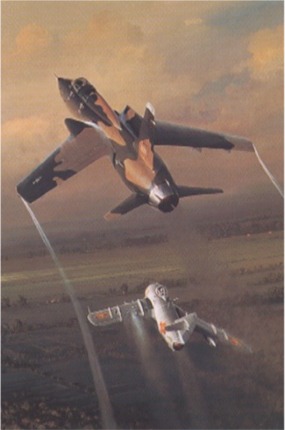 |
Pour répondre à la menace soviétique avec les Mig17 et 21 les Etats-Unis développer une série de chasseur dont le F-105 Il a donc été optimisé pour transporter une charge nucléaire à basse altitude à vitesse supersonique pour pénétrer les défenses aériennes les plus sophistiquées de l’ Union soviétique.
Le Republic "F-105 Thunderchief" ou Thud a été conçu dans les années 1950 comme un bombardier nucléaire Strike Fighter, mais il accède à la célébrité durant la guerre du Vietnam comme le " Thud ", "Ultra Hog" ou "Lead Sled ". comme un avion d’assault classique et de supériorité aérienne
La mission du F 105 était simple voler à des vitesses supersoniques à faible altitude afin de traiter avec une arme nucléaire tactique une cible et après l’attaque faire demi tour rapidement.
C’était aussi un avion Multirole pouvant faire office de escorte
Le 1e vol a lieu en 1955, ensuite le Thunderchief entre en service en 1958. 833 F 105 ont été produite
La version monoplace du-F-105 a été suivie par deux versions biplaces Le F-105F et F-105G Wild Weasel version dédiée à la suppression des défenses aériennes ennemies (Suppression of Enemy Air Defenses (SEAD), comme les base de missiles SAM (SAM 2 )
Il a utilisé pendant la guerre du Vietnam comme bombardier et dans des missions SEAD.
Le F-105 fut utilisé sur le Nord-Vietnam dans les premières phases de la guerre du Vietnam. Les Thunderchief y ont effectués plus de 20.000 sorties avant d’être remplacé plus tard dans le même rôle (missions SEAD) par des F4 Phantom II et le F111
Toutefois, les versions "Wild Weasel" du F-105 est resté en service jusqu'en 1984, date à laquelle ils ont été remplacés par le Wild Weasel F4G
 |
| Internet |
Histoire
En 1951, une équipe d’ingénieurs de Republic Aircraft sous la direction d’Alexandre Kartveli commencé à travailler sur fond propre sur un nouvel avion monoplace à hautes performances pouvant effectuer des frappes nucléaires. Le nouvel appareil, reçoit chez Republic Aircraft la désignation "AP-63FBX (Advanced projet 63 ou chasseur-bombardier, expérimental) .
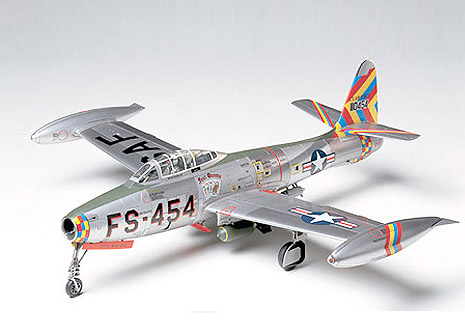 |
| F84F Thunderstreak . |
Cet avion est destiné à remplacer F84F Thunderstreak .Le F105 trouve ses origines en 1950, lorsque l'US Air Force demandé à Republic Aircraft de commencer des études pour la conception d'un chasseur bombardier F105 doté d’une soute à bombes importante . Cette soute intérieure est prevue pour accueillir une bombe nucléaire tactique
A l’époque le Thud sera donc le plus grand avion monomoteur monoplace jamais construit. Les premiers contrats pour 199 avions ont été attribués Republic Aircraft entre Mai 1952 et 1953 pour une livraison initiale prévue pour 1955.
l'US Air Force officiellement approuvé la voilure en flèche du F 105, mais en les exigences de l'US Air Force sont en train de se modifier au point même de menacer le projet pour une courte période à la fin de 1953,
Aussi Republic Aircraft ne reçoit ses premiers contrats qu’en Février 1955,et pour 15 appareils. Ces 15 appareils sont finalement achevés
2 "YF-105A" d'évaluation
3 «RF-105B" avion de reconnaissance,
10 de pré production "F-105Bs".
Entretemps en Juillet 1953, la guerre de Corée avait pris fin, laissant le nouvel aéronef sans aucune mission à remplir.
Incapable de prévoir d’autres missions pour cet appareil L’l'US Air Force modifié ses commandes en neuf RF-105A (reco photo) et 37 F-105A comme chasseurs-bombardiers
le f105 fera partie de la classe des Century Fighters
The Century Fighter
Les Century Fighters font partie d’une série de chasseurs à réaction construit dans les années 50 et début des années 60 dont la numerotation comprend le nombre 100 Ces avions ont aussi fait marqué leur époque dans le domaine des performances et de l'avionique
Le système de désignation américain pour les avions remonte aux années 1920, et il a été utilisé pour l'ex- série P ( P pour poursuit). En 1962, le numéro de avions en service dans l USAF , lUS Navy et USMC a été modifié en vertu du 1962 United State Tri Service Aircraft designation system
Ce système était basé sur celui utilisé par l’ USAAF entre 1948 et 1962. Depuis qu'il a été introduit le système de 1962 a été modifié et remis à jour en 1997
Le système de désignation contient un MDS (ou Mission-Design-Series) décrivant les mission de l’avion par une lettre
Status Prefix
Ce Status Prefix est affecté aux aéronefs ne devant pas mener des opérations normales, tels que la recherche, les essais et le développement.
G en permanence à la terre
J essai spécial, temporaire
N essai spécial, permanent
X Expérimental
Y Prototype
Z planification
Mission de combat
Les avions reçoivent une lettre de code en fonction de leur mission de base. Dans certains cas, la lettre code de la mission de base est remplacée par une autre lettre code en fonction de la mission plus appropriée
A attaque au sol
B Bombardement
C Transports
E guerre électronique
F chasseur
K Ravitailleur
L équipement Laser
O Observation
P patrouille maritime
R Reconnaissance
S guerre anti sous-marine
T entrainement
U « Utilitaire »
X Utilisation spéciale (recherche )
Type d'aéronef
Précise le type d'appareil est même utilisé pour désigner les véhicules aérospatiaux.
D UAV (Unmanned Aerial Vehicle )Drone
G Planeur ou Glider
H Hélicoptère
Q UAV (Unmanned Aerial Vehicle )Drone
S Avion spatial
V VTOLSTOL (Vertical Take-off and Landing / Short Take-off and Landing)
Z Plus léger que l'air
La séquence 100 s'est terminée avec le F 111 exception faite du F117 Nighthawk.
Les Century Fighter de cette serie sont les suivants:
F 100 North American Super Sabre
F101 Mac Donnell Douglas Voodoo
F102Convair Delta Dagger
F104Lochkeed Starfighter
F105 Republic Thunderchief
F106 Convair Delta Dart
Les Century Fighter ont été suivis par la de la Teen Series à la fin du 20e siècle
F 14 Tomcat
F15 Eagle
F16 Fighting Falcon
F18 Hornet.
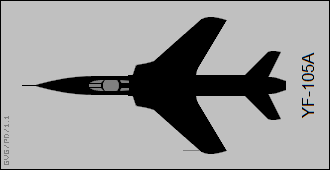 |
Le 1e vol du premier YF-105A a lieu le 22 Octobre 1955, avec le pilote d’essai de Republic «Rusty» Roth aux commandes. Le premier prototype est détruit dans un accident en Décembre 1955
Le deuxième prototype vole le 28 Janvier 1956 avec un moteur Pratt & Whitney P & W J57-P-25 avec turboréacteur, (4625 kgp de poussée à sec et 6800 kgp poussée postcombustion) au lieu de Pratt & Whitney P & W turboréacteur J75,.
Mais avec le J57 il est capable de voler à Mach 1.2
Il est suivi le 26 Mai par le premier F-105B qui vole avec les P & W YJ75-P-3 (7260 kgp de poussée à sec et 0660 kgp de poussée postcombustion).
Mais le F105B est endommagé lors de son premier vol durant lequel son train d'atterrissage ne peut sortir
Le F-105B-1 se démarque aussi du YF-105A par
Une dérive plus grande et des manche à air pour refroidir le moteur emplantées dans les ailes
ce système assure en même temps le refroidissement des appareils de contrôle de tir MA-8 du radar de conduite de tir et de l’ordinateur E-30 gérant le bombardement
Aucuns de ces appareils n'étaient présent sur le F-105A.
En Mars 1956, l’USAF commande 65 chasseurs 105B supplémentaires et 17 RF-105Bs, suivi par une commande de cinq chasseurs biplaces d’entrainement "F-105C"
En Juin 1956 l’avion est officiellement baptisé "Thunderchief»,suivant une longue tradition qui attribue aux avions construit par Républic un nom commençant par Thunder. Il reçoit aussi divers surnoms,
The Thud à cause du bruit de son réacteur ainsi que les surnoms officiels de Ultra Hog Super Hog et Lead Sled
Peu après la production commencera à l’usine Republic de Farmingdale (New York), et l'US Air Force Tactical Air Command (TAC) possède un escadron complet de Thunderchief opérationnel mi-1959 Le 11 Décembre 1959, le général de brigade Joseph Moore établi avec un F - 105B un nouveau record du monde de vitesse de 1957,31 kilomètres / heure sur 100 km en circuit fermé. Mais 4 jours plus tard, ce record est battu par un Convair Delta F106 volant à 2.454 kilomètres/ heure
Conclusion
Si le F105 a été conçu principalement pour assurer le contrôle et interdire tout intrusion à faible altitude et vitesse il a également été un excellent vecteur pour les vols à grande vitesse. C’était aussi un avion stable même lourdement armé .Mais il ne peut pas être engagé en dans un combat tournoyant (Dog Fight ).Dès lors, il sera protégé par des F-4 Phantom d'escorte au cours des missions sur le Nord-Vietnam ou les attaques ont lieu à basse altitude et dans une zone très dense en défense anti aérienne -nord-vietnamiennes. Il n’est pas étonnant que le taux d'attrition fois si élevé. Un total de 382 F-105S ont été perdus en Asie du Sud, dont 320 au combat , la majorité touché par la défense Anti aérienne
610 monoplace F105D ont été construits 283 furent abattus et 52 perdus pour d’autres causes
143 F-105F / G biplaces, 37 abattus et 10 perdus sur le plan opérationnel dans d’autres circonstances
196 pilotes de F 105 ont perdu la vie
Description
Le F 105 a été développé comme remplaçant du F-84F Thunderstreak chasseur bombardier à faible altitude Pendant cette l'US Air Force renforce ses capacités de dissuasion nucléaire
Le Thud est un avion gros et lourd Ses missions exigeaient une soute à bombes un puissant moteur et une charge alaire élevée pour minimiser la traînée et offrit un confort de vol à un équipage évoluant dans un environnement très particulier La conception de cet avion a été remarquable à bien des égards, y compris dans sa soute à bombe, ventilée par les entrées d’air du moteur situés à l'emplanture des 'ailes
 |
| Internet |
Il fut le plus gros chasseur monoplace jamais construit . L’avion possède de grands volumes intérieurs, non seulement pour l'emport de l’arme nucléaire mais pour l’emport de grandes quantités de carburant et d'un radar dans le nez.
Il pouvait transporter une grande quantité de bombes. Dans la soute qui pouvait abriter aussi un réservoir de 1400 litres de carburant interne, mais aussi par des pods sur les ailes et le fuselage .Ceux-ci au nombre de 5 pouvaient emporter 6.350 kgs de bombes classiques ou au napalm.
Un Thud emportait couramment un maximum de 16 M 117 de 350 Kg
Après les premières expérience s de combat le F-105D fut équipé d’un meilleur siège éjectable d’un radar autodirecteur et d'alerte (radar homing and warning (RHAW) d’une antenne sur la dérive , de blindages supplémentaires, et d’une protection du système hydraulique qui s'est avéré très vulnérable au combat.
Et enfin pour prévenir les problèmes créés par l'humidité, les températures ambiantes élevées d'Asie du Sud sur l'électronique, et le moteur, la plupart des avions déployés au Vietnam furent finalement été équipés de ram-air scoops ou évacuateur d’humidité pour améliorer ce problème. Mais malgré ces maladies de jeunesse le F-105 s'est finalement imposé comme l’un des meilleurs chasseurs tactiques de son époque
Versions
YF-105A: prototype, jamais entré en production
YF-105B: prototype amélioré avec le moteur amélioré et nouvelle forme fuselage
F-105B: Première production d'un chasseur-bombardier monoplace 71 construits
RF-105B: Modèle de reconnaissance, jamais construit
JF-105B: Appareil test construit à partir de cellules de RF-105B 3 convertis
F-105C: Projet chasseur biplace ecole jamais construit
F-105D: Monoplace chasseur bombardier tout temps avec un nouveau radar et de navigation, un moteur amélioré et une meilleure avionique, 600 construits
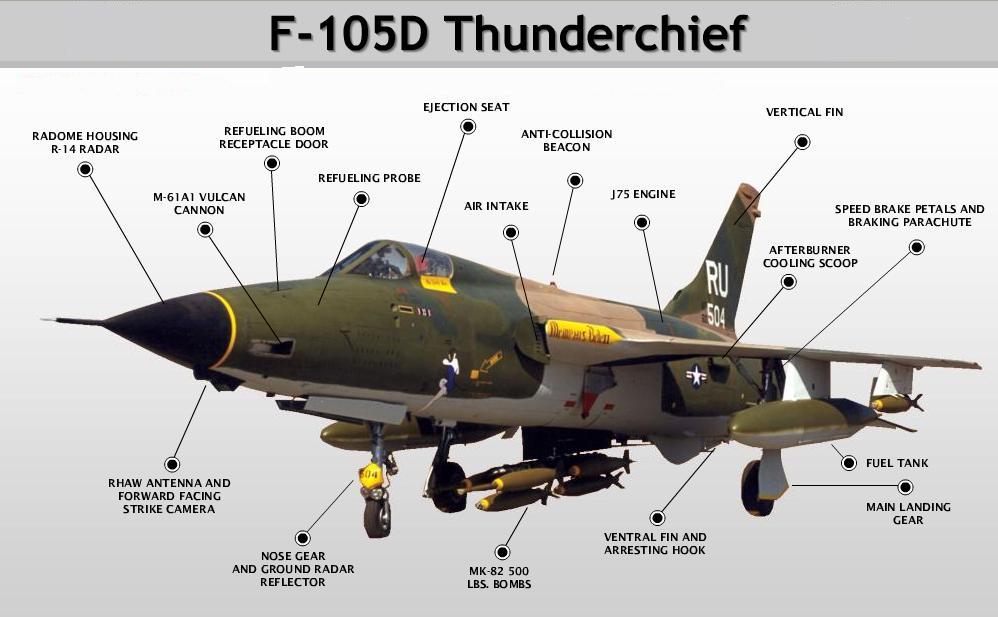 |
| Internet |
RF-105D: Modèle de reconnaissance, jamais construit
F-105E: Projet d’avion biplace école basé sur «modèle D», jamais construit
F-105F: Biplace d'entraînement 143 construits
EF-105F: Modele 'F' équipés d’un radar 'autodirecteur radar et de matériel de brouillage, 86 convertis
F-105G: biplace Wild Weasel modèle avec ECM, radar 'autodirecteur radar et de matériel de brouillage 60 EF-105F furent reconstruite comme version 'G'
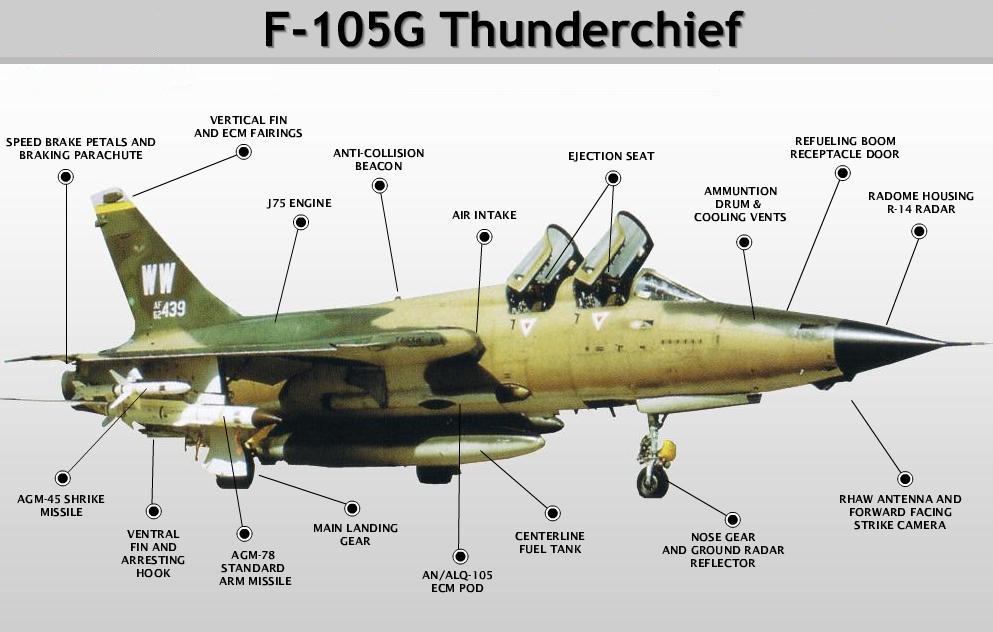 |
| Internet |
Carrière opérationnelle
Le F-105 est entré en service en 1958 et resta en service pendant près de 30 ans.
Le F-105D a finalement équipé treize tactical fighter wings.. Ce modèle a était utilisé lors de la campagne de bombardement tactique sur le Vietnam (entre avril 1965 et Septembre 1972 F105 ont été utilisés dans plus de 20.000 missions) jusqu'à ce qu'il soit retiré en 1970 après de lourdes pertes.
Le Thud en Asie
Les missions du Thud ont été réalisées à partir de Korat et des bases aériennes en Thaïlande Thakli AN,.Une seule unité a été déployée à Da Nang Les survivants sont retournés aux États-Unis et ont commencé à équiper les unités de réserve et l’ ANG à partir de 1971, où ils cotoient les anciens 71 105B déjà retirés de première ligne et transférés à la Air National Guard (ANG) dès 1964,
Le F 105 dans le monde
Entre 1961 et 1968, il fut déployé à Bitburg AB (36e Tactical Fighter Wing) et Spangdahlem AB (49th Tactical Fighter Wing) en Allemagne
Jusqu'en 1970, il fut aussi déployé à Wheelus AB en Libye (36e et 49e TET)
Après 1975, une grande partie des F-105 ont été retires, même si un nombre important continuea être en service dans la Réserve et la Air National Guard dans les années 1980.
Le dernier f 105 qui ait volé a été le F-105G Wild Weasel qui a finalement décollé de l'US Air Force le 12 Juillet, 1980 ..
Le dernier Thunderchief a été maintenu en état de vol pendant quelques années jusqu'au 25 février 1984 date de son dernier vol opérationnelle
Un certain nombre de Thud sont conservés dans des musées ou comme pots de fleurs à ,l’entrée de différentes bases aériennes dans le monde entier.
SAF Thunderbird
.jpg) |
| Internet |
le F-105B a été choisi par l'US Air Force Thunderbird équipe de voltige aérienne pour remplacer les petits et agiles CC F100 Super Sabre.
En 1964, mais après six meetings aériens et un accident qui entraine la mort d’un pilotes les Thunderbird ont de nouveau été équipée de F-100D Super Sabre
Caractéristiques F105 / D
Poids vide 12470 kg
Poids Maximal16,165 kg
Poids maxi décollage 23,834 kg
6,700 kg de charge utile
Equipage 1
Longueur 19,63 m
Envergure 10,65 m
Hauteur 5.99 m
Surface alaire 35,76 m²
Motorisation: 1 × Pratt Whitney J 75-P-19W postcombustion à turboréacteur
Vitesse maximale: Mach 2,08 à 11.000 m
Combat rayon de 1,250 km
Plafond 4800 m
Armement
Gun: 1 × 20 mm H 61 canons Vulcan, 1028 tours
Pods 5
soute à bombes plus avec une capacité de 6350 kg à des munitions, y compris des bombes conventionnelles et nucléaires,
Missiles AIM 9 Sidewinder ou AGM 12 Bullpup
Radar
NASARR R-14A
AN/ASG-19 Thunderstick
AN/ARN-85 Loran (AN/ARN-92 dans Thunderstick II-modification d'aéronefs)
Type : Chasseur-bombardier F105 / G
Poids à vide : 12474 kg ;
Masse maximale au décollage : 13834 kg
Equipage 2
Longueur : 19,58 m
Envergure : 10,65 m
Surface alaire : 35,76 m²
Motorisation :
1 réacteur J75-P-15W de 11113 kgp avec postcombustion
Vitesse maxi : 2369 km/h (Mach 2,2) à 11000 m ;
Plafond pratique : 12802 m
Rayon d'action : 1152 km
Armement
1 canon rotatif Vulcan de 20 mm
6350 kg d'armes et de réservoirs supplémentaires dans la soute ou sur pylônes
 |
Utilisateurs Users
.jpg) |
| USA |
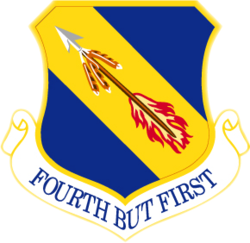 |
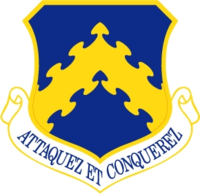 |
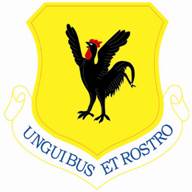 |
 |
| 4th FW |
8th FW |
18th FW |
23th FW |
.gif) |
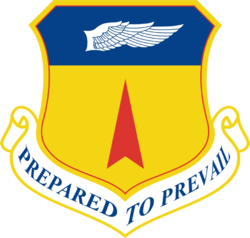 |
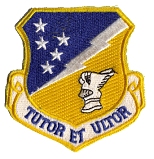 |
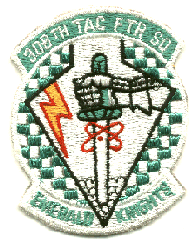 |
| 31th FW |
36th FW |
49th FW |
308th TFS |
 |
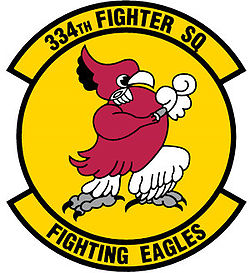 |
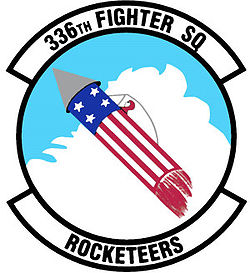 |
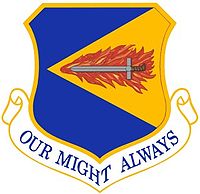 |
| 333rd FS |
334th FS |
336th FS |
355th FS |
 |
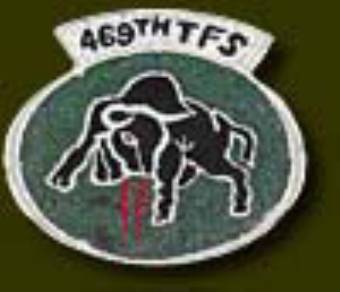 |
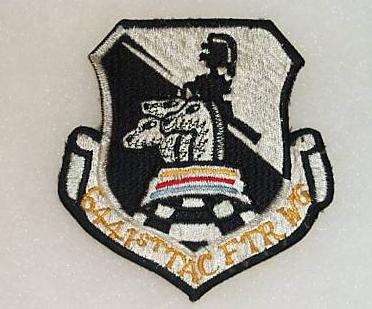 |
|
| 388th FS |
469th FS |
6444th FS |
|
Photoscope Walk Around
Republic F-105 Thunderchief
 |
To meet to soviet threat with the Mig17 and 21 USA develop a serie of fighter and one of this is the F-105 He was therefore optimized to carry a nuclear payload while flying at low altitudes at supersonic speeds to penetrate the advanced air defenses of the Soviet Union.
Republic "F-105 Thunderchief" or Thud was conceived in the 1950s as a nuclear strike fighter bomber , but would achieve fame in the Vietnam War as the "Thud", "Ultra Hog" or "Lead Sled". as conventional strike and "defense suppression" aircraft
The F-105's mission was simple: fly at supersonic speeds at low levels, deliver a single tactical nuclear weapon on the battlefield and get the hell away from the blast.
He would be a Multirole or swing role aircraft
First flown take part in 1955, and Thunderchief enter service in 1958. 833 F 105 were produced
The single-seat F-105 was followed by 2 version two-sea the t F-105F and F-105G Wild Weasel variants became the first dedicated Suppression of Enemy Air Defenses (SEAD) platforms, fighting against SAM 2 Guideline. He used during the Vietnam war ha s bomber and SEAD missions.
F-105 make the primary strike bomber over North Vietnam in the early stages of the Vietnam War. Over 20,000 Thunderchief sorties were flown after ,
F105 was later replaced as a strike aircraft over North Vietnam by THE f4 Phantom II and the F111 However, the "Wild Weasel" variants of the F-105 remained in service until 1984, when they were replaced by the F4G Wild Weasel
 |
| Internet |
History
In 1951, Republic Aircraft design team under Alexander Kartveli began work as a company venture upon on a new high-performance, single-seat low-level nuclear strike aircraft. The new aircraft, which was given the company designation of "
 |
| F84F Thunderstreak Internet |
AP-63FBX (Advanced Project 63 Fighter Bomber, Experimental) intended to replace F84F Thunderstreak which was an adaptation of a fighter into a fighter-bomber the F105 found its birth on 1950 when USAF asked to Republic to initiate the design studies a for the pure fighter-bomber F-105 got a very large interior bomb bay The bomb bay was designed to accommodate a single tactical nuke ( nuclear bomb) so the Thud was at that time the largest single-engine single-seat fighter ever built. Initial contracts were awarded to Republic in May1952 and 1953 for what at first was a total of 199 aircraft, with initial delivery scheduled for 1955. the US Air Force officially endorsed Republic's swept wing design, applying to it the name F 105 But in In reality, USAF requirements were shifting at the time, even to the point of shutting down the project for a short time at the end of 1953, and the company did not receive a solid contract until February 1955, for 15 aircraft. These 15 aircraft were finally completed as two "YF-105A" evaluation aircraft; three "RF-105B" reconnaissance aircraft; and ten initial production "F-105Bs".But in July1953, Korean War ended , leaving the new aircraft without any mission to fulfill. Being unable to think up any other operational requirements, US Air Force changed the order to nine RF-105A(photo reco) and 37 F-105A as fighter-bombers
He make part of the Century Fighters
The Century Fighter
This fighter Serie named Century Fighter was a series of jet fighters built in the 50’s and early 60s whose designation number lay in the 100 and above range. These aircraft have also advanced performance and avionics when they were introduced
The designation system stretched back to the 1920s as it was used for the former P- series (pursuit aircraft). In 1962 the fighter number sequence was reset under the 1962 United State Tri Service Aircraft designation system
This system was based on the one used by the (USAF) between 1948 and 1962. Since it was introduced the 1962 system has been modified and updated; in 1997 a revised form of the system was released
The designation system produces an MDS (or Mission-Design-Series) designation of the form:
Status Prefix
These prefixes are attached to aircraft not conducting normal operations, such as research, testing and development.
G Permanently grounded
J Special test, temporary
N Special test, permanent
X Experimental
Y Prototype
Z Planning
Basic Mission
Aircrafts are to be assigned a basic mission code. In some cases, the basic mission code is replaced by one of the modified mission codes when it is more suitable
A Ground Attack
B Bomber
C Transport
E Electronic warfare
F Fighter
K Tanker
L Laser-Equipped
O Observation
P Maritime patrol
R Reconnaissance
S Anti submarine warfare
T Trainer
U Utility
X Special Research
Aircraft Type
The aircraft type element is used to designate the type of aerospace craft.
D UAV (Unmanned Aerial Vehicle) Control Segment
G Glider
H Helicopter
Q UAV
S Space plane
V VTOLSTOL (Vertical Take-Off and Landing / Short Take-Off and Landing)
Z Lighter than air
The sequence ended with the F 111 when started the reset-sequence again with the exception with the F117 Nighthawk.
The aircraft usually included in the Century Series are the:
F 100 North American Super Sabre
F101 Mac Donnell Douglas Voodoo
F102 Convair Delta Dagger
F104Lochkeed Starfighter
F105 Republic Thunderchief
F106 Convair Delta Dart
The Century Serie was followed by the Teen Series at the late 20th century
F 14 Tomcat
F15 Eagle
F16 Fighting Falcon
F18 Hornet .
 |
History
Initial flight of the first YF-105A take place October 22nd 1955, with Republic test pilot "Rusty" Roth at the controls. The first prototype was destroyed in a crash in December 1955 The second prototype followed on January 28th 1956 with a Pratt & Whitney P&W J57-P-25 turbojet,(4,625 kgp dry thrust and 6,800 kgp ) afterburning thrust) instead of the Pratt & Whitney P&W J75 turbojet, . But with the J57 was still capable of Mach 1.2.He was followed on May 26th by the first F-105B who perform its initial flight with the P&W YJ75-P-3 (7,260 kgp dry thrust and 0,660 kgp afterburning thrust). But F105B suffered damage during its first flight when its landing gear failed to extend
The F-105B-1 also differed from the YF-105A
a larger tailfin with an air intake in the root
forward swept engine air inlets in the wing roots.
The ram-air intake in the tail fin root provided cooling for the MA-8 firing control system,
E-34 radar ranging gunsigth
E-30 bombing computer, none of which were present in the F-105A.
In March 1956, the service had ordered 65 more F-105Bs and 17 RF-105Bs, followed by an order for five two-seat "F-105C" trainers
In June 1956 "Thunderchief", as it was formally named following a long tradition of giving Republic aircraft names beginning with Thunder . He receive also some nicknames,
The Thud du to the sound of the engine Other on official nicknames were Ultra Hog Super Hog and Lead Sled
Little after production begin from Republic's plant in Farmingdale ( New York) , and USAF Tactical Air Command (TAC) had a full squadron of Thunderchiefs in service by mid-1959..On December 11, 1959, Brigadier General Joseph Moore with a F-105B set a new world speed record of 1957.31 km/h over a 100-kilometer closed circuit. But 4 days later this record was beaten by a Convair F106 Delta Dear flying at 2454km/h
Conclusion
If F105 was designed primarily for low-level interdiction and its low-altitude speed F 105 was also excellent for speed and aerodynamic stability with his highly loaded wing but he cannot sustained turns in a dogfight. So he would be protect by F-4 Phantoms escort and during the missions on North Vietnam F105 do make low-altitude attacks and dive bombings into the range of North Vietnamese anti-aircraft fire, so attrition rates were so high. A total of 382 F-105s were lost in Southeast Asia, 320 of those in combat with a majority of losses are the result of enemy ground fire
610 single-seat F-105D built Lost 283 shot down and 52 lost operationally.
143 F-105F/G two-seaters, 37 shot down and 10 lost operationally
196 USAF pilots lost their lives flying the Thud
Description
F 105 was developed as a replacement for the F-84F Thunderstreak low-altitude fighter bomber during a period when the US Air Force was focused on building up its nuclear deterrence capabilities
The Thud was a large and heavy aircraft His mission concept required an internal bomb bay with a powerful engine and high wing loading to minimize drag and maximize crew comfort in the demanding flight environment The design was notable in many respects, including its large bomb bay, unique forward-swept engine inlets at the wing root, and the fact that it remains the largest single-seat combat aircraft ever built. The plane has a voluminous interior not only for the bulky nuclear weapon but for a large fuel capacity and a radar in the nose.
 |
| Internet |
He could carry a large amount of bombs. The internal bomb bay of the Thud would usually be fitted with a 1400 liters internal fuel tank, leaving only the five wing and
fuselage hardpoints These, however, could accomodate 6350 kgs of conventional or napalm bombs. A Thud was commonly loaded with up to 16 M 117 350kgs. bombs.
After the first figth experience F-105D was updated with a better ejection seat, radar homing and warning (RHAW) antenna on the tail fin, additional armor, and protection to the hydraulic system which proved to be very vulnerable to combat damage.
AN to prevent problems created by humidity High ambient temperatures of Southeast Asia upon electronics,and engine , most of the aircraft deployed to Vietnam were eventually fitted with ram-air scoops to ameliorate this problem. But despite these teething troubles, the F-105 eventually emerged as one of the most betters tactical fighters of its era
Versions
YF-105A: Original prototype, never went into production
YF-105B: Improved prototype with upgraded engine and new fuselage shape
F-105B: First production one-seat fighter-bomber; 71 built
RF-105B: Proposed Recce model, never built
JF-105B: Test aircraft re-built from RF-105B airframes; 3 converted
F-105C: Proposed two-seat trainer, never built
F-105D: One-seat all-weather fighter bomber with new radar and navigation equipment, improved engine, and better avionics; 600 built
 |
| Internet |
RF-105D: Proposed reconnaissance model, never built
F-105E: Proposed two-seat trainer based on 'D' model, never built
F-105F: Two-seat combat-capable trainer; 143 built
EF-105F: Rebuilt 'F' models equipped with radar homing and jamming equipment; 86 converted
F-105G: Two-seat Wild Weasel model with ECM , radar homing, and jamming equipment; 60 EF-105F models rebuilt as 'G' variant
 |
| Internet |
Operational life
The F-105 began entering service in 1958 and remained in use for nearly 30 years.
The F-105D ultimately equipped thirteen tactical fighter wings. This model bore the brunt of the tactical bombing campaign over Vietnam (between April 1965 and September 1972. F105 were used in over 20,000 missions) until it was withdrawn from the war in 1970 following heavy losses.
Thud in Asia
Thud operations were conducted from Korat and Thakli air bases in Thailand an,d one unit was deployed in Da Nang The survivors returned to the US and began equipping Reserve and ANG units starting in 1971 where they (meet again with the 71 105B s phased out of front-line duty and transferred to the Air National Guard (ANG) in 1964,
F 105 in the World
Between 1961 and 1968, Thud was stationed in Gerrmany at Bitburg AB (36th Tactical Fighter Wing) and Spangdahlem AB (49th Tactical Fighter Wing)
Until 1970,in used Wheelus AB in Libya (36th and 49th TFW)
After 1975 much of the remaining F-105 fleet was retired, although significant numbers continued in service with the Reserves and National Guard into the 1980s.
he last model to see front-line service was the F-105G Wild Weasel that finally departed the USAF for a reserve unit in July 12, 1980..
The last Thunderchiefs soldiered on for a few more years until the F-105D completed its final operational flight for the Reserves on February 25th, 1984
A number of Thuds have survived in museums and as gate guards on various air bases around the world.
SAF Thunderbirds
.jpg) |
| Internet |
the F-105B was elected by the USAF Thunderbirds aerial demonstration team to replace the smaller and agile F100 CC Super Sabre. In 1964 but after six airshows and an accident in which one of the pilots was killed, the Thunderbirds were again equipped with F-100D Super Sabre
Technical Data F105/D
Weigth Empty 12,470 kg
Loaded weight 16,165 kg
Max take off 23,834 kg
Payload 6,700 kg of weapons
Crew 1
Length 19.63 m
Wingspan 10.65 m
Height 5.99 m
Wing area 35.76 m²
Powerplant: 1× Pratt Whitney J 75-P-19W afterburning Turbo jet
Speed max : Mach 2.08 at 11,000 m
Combat radius 1,250 km
Ceiling 4,800 m
Armament
Gun: 1× 20 mm M 61 Vulcan cannon, 1,028 rounds
Hardpoints: 5 plus bomb bay with a capacity of Up to 6350 kg of ordnance, including conventional and nuclear bombs,
Missiles AIM 9 sidewinder or AGM 12 Bullpup
Radar
NASARR R-14A
AN/ASG-19 Thunderstick
AN/ARN-85 Loran (AN/ARN-92 in Thunderstick II-modified aircraft)
Type : Chasseur-bombardier F105 / G
Weigth Empty : 12474 kg ;
Loaded weight : 13834 kg
Crew 2
Length : 19,58 m
Wing span : 10,65 m
Wing area : 35,76 m²
Powerplant: 1× Pratt Whitney J 75-P-19W afterburning Turbo jet
Speed max : 2369 km/h (Mach 2,2) at 11000 m ;
Ceiling : 12802 m
Combat radius : 1152 km
Armament
Gun: 1× 20 mm M 61 Vulcan cannon, 1,028 rounds
Hardpoint for 6350 kg of weapons and tanks in pylons and bomb bay











.jpg)

.jpg)




.gif)








